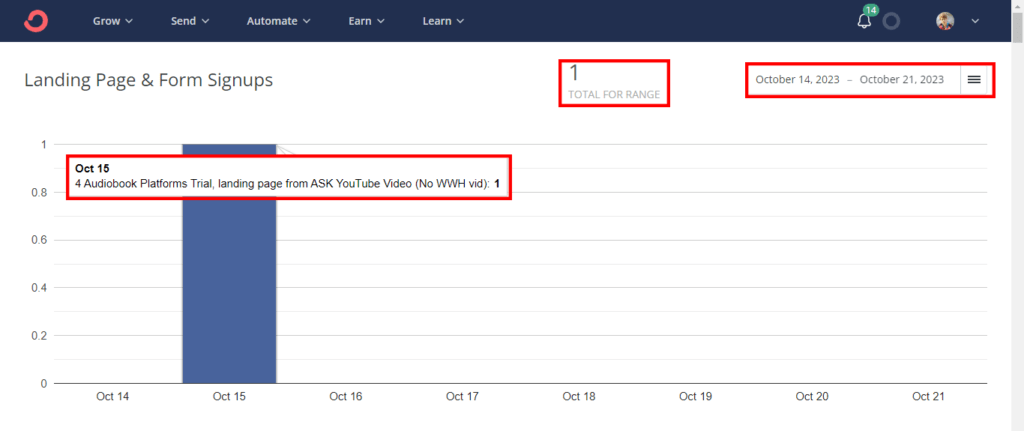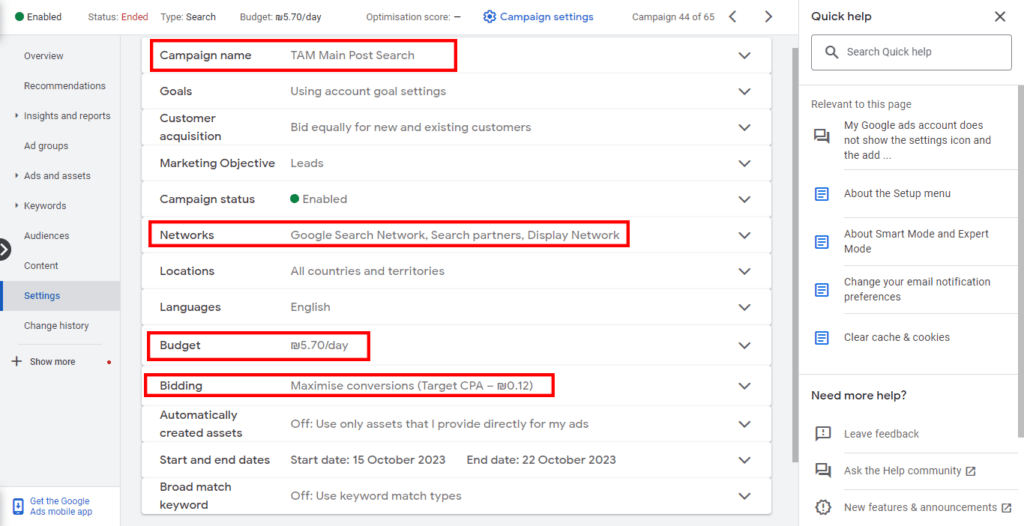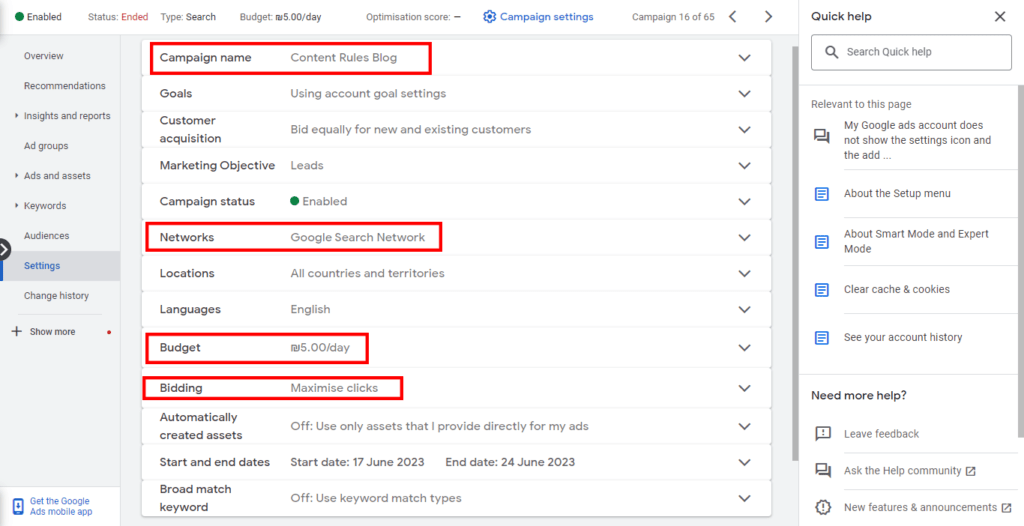How to get more than 0 Leads in the next blog post.
The goal: 1 or more Email leads from forms of Tested Advertising Methods.
Why? – (Other forms may get leads from this and other content, so it’s unsure and they don’t count.)
Timeframe: During the period the ad ran (14.10 – 21.10.2023).
Why? – So that I may attribute the leads directly to the ad. (Leads may come from organic sources, but the volume of the views from the ad is much higher which makes it very likely they come from the ad.)
The result: 0 Leads. FAILED.
The goal of the rest of the post is to find out why this happened and how to succeed next time.
Increasing Leads By Increasing Form Visits
Fact: A person first needs to visit a form before signing up to it.
So, which forms bring more visits? And how can we learn from them to increase visits and, thus, leads in future content?
Which Forms Got More Visits?
4 out of 14 forms got visits:
7 form visits overall.
They are:
1. 5 common marketing mistakes in Main post (In text) – 3 visits
2. 5 common marketing mistakes in rating post (In text) – 2
3. 5 common mistakes in analysis post (In text) – 1
4. Worksheet from YouTube video description (Button on a landing page) – 1
In-Text Forms Outperformed YouTube Description By 6
The above data shows that in-text forms in the blog post outperformed YouTube description forms 6 times over. That is even though the complete majority of the traffic to the blog came from the video itself which logically shows it should have probably been the other way around.
Likely Because YouTube Forms Require 3 More Clicks
I suppose that in-text forms get more views because in order to watch a YouTube form, a person needs to:
1. Open the YouTube description
2. Click the landing page link
3. Click the download now button on the landing page
These are three steps more than in the end of a blog post where it’s clearly visible without any clicks.
Also, ConvertKit Shows In-text(1 Click Access) Outperforms Buttons (2 Clicks Access)
A quick data test of In-Text vs. Button forms which got engagement shows:
Button forms in blog posts(At least 1 subscriber): Forms – 2, Total Subscribers – 2, Visits – 3
In-Text forms in blog posts(At least 1 subscriber): Forms – 5, Total subscribers – 7, Visits – 909
Of course there might be a different number of posts with buttons and in text which is not equal, and number of visits to the blog posts themselves may vary, but it’s pretty clear that the In-Text forms get more visits, which makes me believe they’re more likely to get leads.
Conclusion: An A/B Is Required For Reliable Results
The above data may give us hints, but to be sure we need to Isolate the In-Text vs. Button forms in the same post.
Action in HTWAGA: Make 2 identical posts which are different only in the type of form (In-text vs. Button) at their end.
With identical PPC ads to match.
This kind of test shall give us more accurate data ( Stay tuned for results in the next analysis post 😉 )
Assumption being tested: Forms that require clicks, get less views and consequently – leads.
More Leads From Worksheet or Useful Data CTA?
The YouTube ad which is analyzed in the Video Analysis post shows a lot more clickability than the 4 previous ones.
(Clickability shows interest which may increase chance of leads)
One of the three possible reasons I mentioned is that it concentrates on an “Action” CTA in the form of a worksheet.
More testing is required to be more certain about that too, but meanwhile, while I test(as described in YouTube ad analysis) I shall go with my gut and try a worksheet PDF.
Action in HTWAGA: Change PDF from “Mistakes” to “Worksheet” in the main post.
How To Make America PPC Ads Great Again
CR Nailed The Lead Goal With PPC
As we’ve seen in the analysis of Content Rules, when PPC ads work, they may lead to an “Overkill”. For CR it was 322 form views and 1 lead. It was great, but this time it was a little less great. Lets detect why it happened
so that we may repeat this greatness.
Why was TAM Different?
It Wasn't Because of The "Leads" Objective
Why did the PPC ad not work again? ( 0 impressions 0 interactions )
In the analysis of CR, I tried to explain why previous PPC ads didn’t work.
The possible explanation was the difference in campaign objective – “Leads” for CR, no objective for others.
So in TAM I changed the objective to “Leads”, but it still doesn’t work.
Maybe it was "Maximize Clicks" or "Networks"?
I compared TAM to CR and found 3 more differences
1. A bidding setting of “Maximize Clicks” – in CR Vs. “Maximize Lead Conversions(Target CPA 0.12₪)” – In TAM
2. TAM has Additional Networks: Search Partners and Display Network While CR – just Google Search Network
3. TAM budget 5.70₪, CR budget 5₪
Action in HTWAGA: When launching the PPC ad of HTWAGA, make points 1 and 2 similar to CR. If that still doesn’t work after 1 week, re-launch it and follow the
YouTube guide mentioned in CR Analysis.
Up Next: Tested Advertising Methods Video Analysis
This post is getting kinda’ long so I made a separate one concentrating on getting more clicks/leads from video ads/organic videos.
Bonus: Finding Your 5 Best Performing Audiences
If you’re doing paid advertising you may also find it interesting how I discovered the 5 most performing channels out of under 50 I was targeting in 4 ads, so that you can do the same in your own advertising. (PDF below) (Your numbers may vary)
Related Posts


